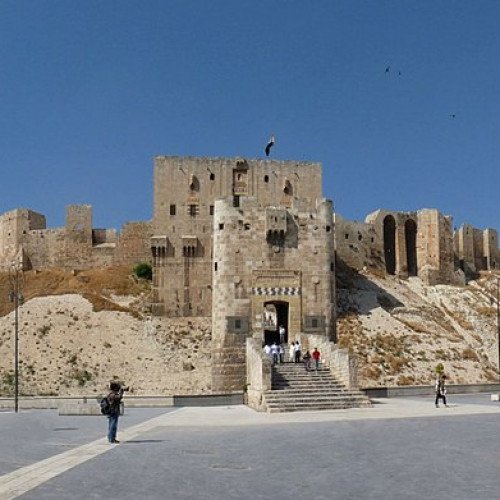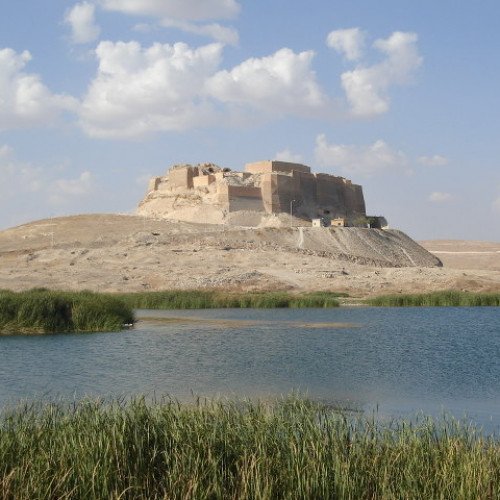Castles of "Syria" CITADEL OF ALEPPO vs QAL'AT NAJM

CITADEL OF ALEPPO
The Citadel of Aleppo (Arabic: قلعة حلب, romanized: Qalʿat Ḥalab) is a large medieval fortified palace in the centre of the old city of Aleppo, northern Syria. It is considered to be one of the oldest and largest castles in the world. Usage of the Citadel hill dates back at least to the middle of the 3rd millennium BC. Occupied by many civilizations over time – including the Armenians, Greeks, Byzantines, Ayyubids, Mamluks and Ottomans – the majority of the construction as it stands today is thought to originate from the Ayyubid period. An extensive conservation work took place in the 2000s by the Aga Khan Trust for Culture, in collaboration with Aleppo Archeological Society. Dominating the city, the Citadel is part of the Ancient City of Aleppo, a UNESCO World Heritage Site since 1986. During the 2010s, the Citadel received significant damage during the lengthy Battle of Aleppo. It was reopened to the public in early 2017 with repairs to damaged parts underway. The recently discovered temple of the ancient storm-god Hadad dates use of the hill to the middle of the 3rd millennium BC, as referenced in cuneiform texts from Ebla and Mari. The city became the capital of Yamhad and was known as the "City of Hadad". The temple remained in use from the 24th century BC to at least the 9th century BC, as evidenced by reliefs discovered at it during excavations by German archaeologist Kay Kohlmeyer. The patriarch Abraham is said to have milked his sheep on the citadel hill. After the decline of the Neo-Hittite state centered in Aleppo, the Assyrians dominated the area (8th–4th century BC), followed by the Neo-Babylonians and the Persians (539–333).
Statistics for this Xoptio

QAL'AT NAJM
Qal'at Najm (Arabic: قلعة نجم) is a castle located on the right bank of the Euphrates, near the town of Manbij in north Syria. The castle probably stood on the site of an earlier Roman site and is known from Arabic texts since the 7th century CE. Reconstruction works were carried out in the castle by Nur ad-Din Zangi and Az-Zahir Ghazi during the 12th and early 13th centuries. The castle sits on a mound that is protected by a glacis and houses a palace-bath complex and a mosque. The castle is located on the right bank of the Euphrates, at a site where two islands allowed the construction of a pontoon bridge which carried a trade route from Aleppo to Harran over the Euphrates. Qal'at Najm is a castle of the truncated cone type, similar to the Citadel of Aleppo and those of Hama and Homs. It lies on a mound whose slopes were covered with an ashlar glacis, remains of which are still visible at Qal'at Najm. Also like the Citadel of Aleppo, its entrance is characterized by a ramp and a massive gate with four bends. At least three, and possibly a fourth, inscription dating to Az-Zahir's reign have been found at Qal'at Najm. Inside Qal'at Najm is a palace-bath complex, consisting of four wings opening to a central courtyard with a fountain. The castle also housed a mosque with an exterior double arcade looking out over the Euphrates. This architectural feature is very rare in mosques; another example can be seen in a mosque in the Alhambra in Spain. The town that lay at the foot of the castle, and that is mentioned in historical texts, has disappeared.